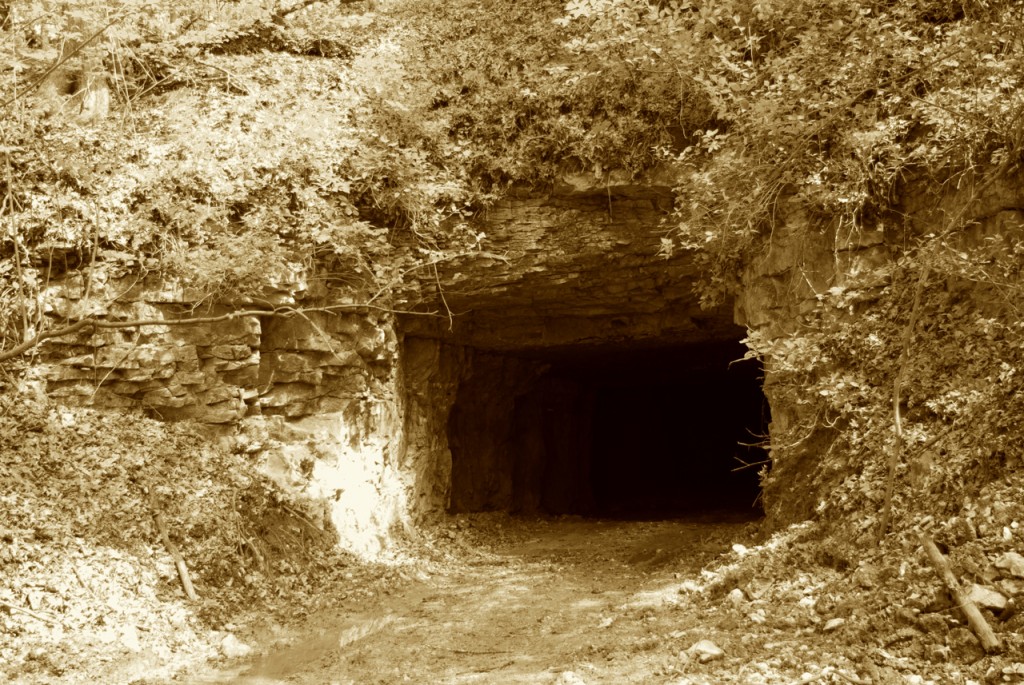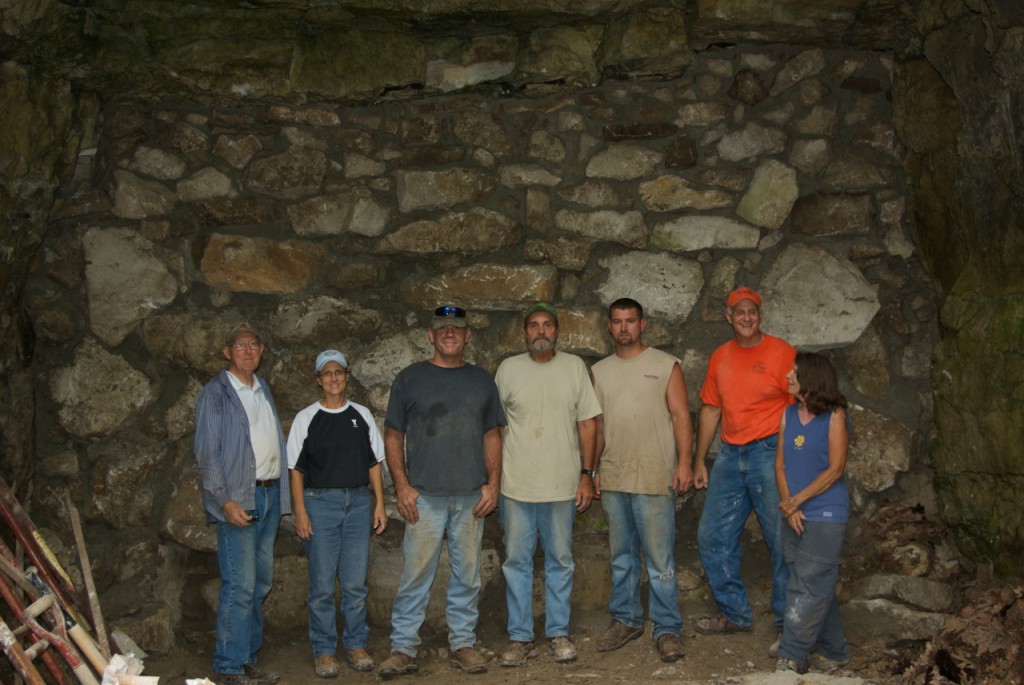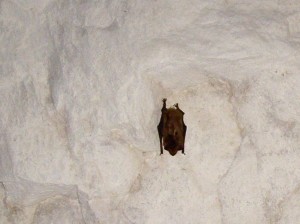White Mine Habitat Transformation
During the 1920s and into the 1940s, workers hewed limestone from the 1.75-acre room-and-pillar style White Mine. The stone was transported across the Mississippi River by ferry between Harrisonville, IL and Herculaneum, MO, during the ferry operations period from 1936-1943. The very white rock taken from this area was valued for the high calcium content that allowed the manufacture of both high-quality mirror and window glasses at the Pittsburgh Plate Glass plant in Crystal City, MO.
In the mid-1950s, the abandoned mine was transformed into a poultry production area. Pens, feeders, water dishes, and electric lights and heaters installed in the mine rooms enabled the commercial marketing of both chickens and eggs for a number of years.
The former White Mine is again undergoing a transformation. Beginning in February 2010 a team of scientists from the Illinois Natural History Survey, the Illinois Department of Natural Resources, the Illinois Speleological Survey, the Subterranean Ecology Institute, and Bat Conservation International devised a plan to create conditions more like those of a natural cave. The advisory team helped Clifftop set up this interesting on-going experiment in habitat transformation.
Volunteers worked on a elaborate plotting and mapping system, noting all conditions as they found them for a detailed “before” map record of the former mine.
Once the extensive mapping of the interior was complete, the work of habitat transformation began. Leftover equipment from both mining and chicken farming was hauled away. Volunteers then installed a series of sensors allowing constant monitoring.
All entrances have been closed to prevent unauthorized access. Entrance closure also allows us to maintain even airflow throughout the interior and to stabilize temperature and humidity. Our hope, and that of the advisory team, is that the former White Mine has a new life: one as a habitat that is friendly to cave-dwelling and cave-dependent wildlife, such as bats and several types of invertebrates.
Monitoring of the habitat transformation through 2011 and early 2012 indicates that conditions are changing, with increased humidity and more stable temperature profiles. These altered conditions indicate that the former mine is becoming a friendlier habitat for cave-dwelling and cave-dependent wildlife.



